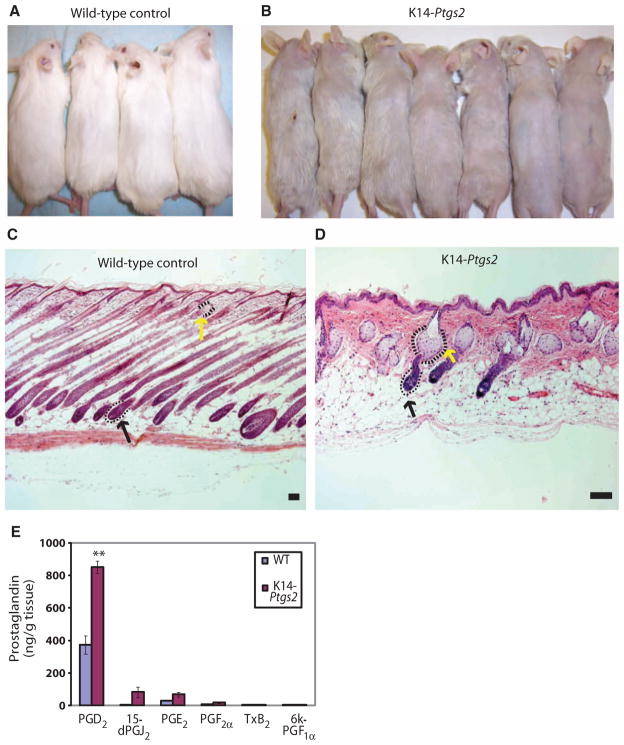Fig. 5.
K14-Ptgs2 transgenic mouse skin phenocopies AGA with alopecia, sebaceous gland hyperplasia, and elevated PGD2 levels in skin. (A and B) K14-Ptgs2 animals develop alopecia (B) compared to wild-type (WT) controls (A). (C and D) Hematoxylin and eosin–stained skin from WT (C) and K14-Ptgs2 animals (D) shows sebaceous gland (yellow arrow) and hair follicle (black arrow) morphology. Scale bars, 100 μm. (E) Amount of different prostaglandins present in skin tissue from WT mice (n = 5) and K14-Ptgs2 transgenic mice (n = 3). Data are means ± SEM. **P < 0.01 comparing WT to K14-Ptgs2.

